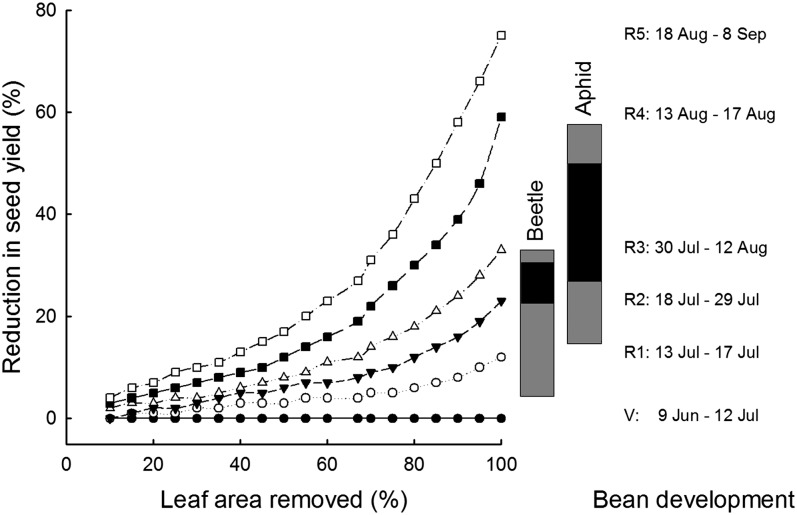Figure 2.
The consequences of insect damage depend on its timing relative to plant development. In soybean, the sensitivity of seed yield to leaf area removal by herbivory varies strongly among developmental stages (V, vegetative; R1, beginning bloom; R2, full bloom; R3, beginning pod; R4, full pod; R5, beginning seed; from National Crop Insurance Service publication 6302), where a 60% reduction in leaf area during R5 results in greater than 20% yield reduction, but no detectable yield reduction if the same leaf area removal occurs during vegetative growth. The dates (right) for different developmental stages are for soybean in the SoyFACE experiment (Castro et al., 2009). Vertical bars represent the time when Japanese beetles and soybean aphids are abundant (97% of the total annual population), and the black bars represent times of peak abundance (beetles in central Illinois: 26% of total population; Van Timmerman et al., 2000; aphids in southern Wisconsin: approximately 60% of total population; http://www.plantpath.wisc.edu/soyhealth/aglycine.htm). Shifting the timing of insect attack relative to plant development will alter its effect on seed yield.

